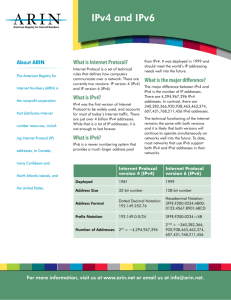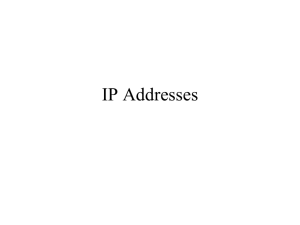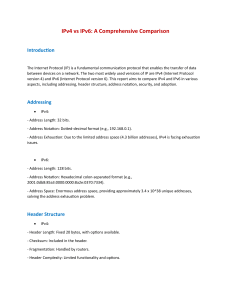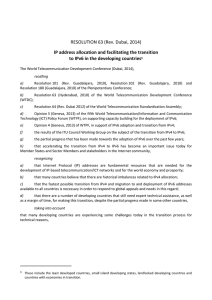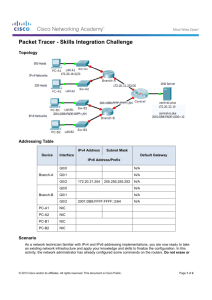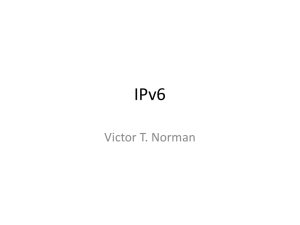IPv4 to IPv6 Migration strategies
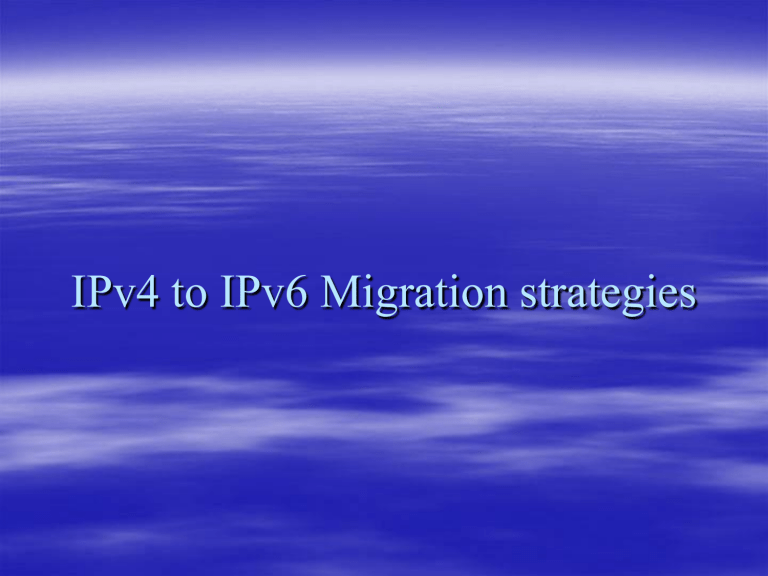
IPv4 to IPv6 Migration strategies
What is IPv4
Second revision in development of internet protocol
First version to be widely implied.
Connection less protocol used for packetswitched link layer networks (e.g. Ethernet)
Uses 32 bit addresses which are equivalent to
4,294,967,296 possible unique addresses
What is IPv6
Version designed to succeed IPv4.
First publicly used IP since 1981.
Protocol for packet-switched internetworking.
IPv6 was developed by the Internet Engineering
Task Force (IETF).
Uses 128 bit addresses , much bigger than IPv4.
Introduction
Global shortage of IP addresses
IP addresses have greater demands
Despite NAT (network address translation) IPv4 addresses are likely to run out in next few years
Need a fair policy for allocation of remaining IP addresses.
Deployment of IPv6 needed on urgent basis
Problems of IPv4
Fixed length, 32 bit scheme
Managed by IANA
Low government involvement
Need for international cooperation
Policy for addresses was for first come, first serve.
Pre occupation of large amount of addresses by early users
What’s good about IPv6?
Bigger address space
No need of NAT
Full IP connectivity
Facilitates mobile devices
Allows roaming between different networks
Built in security system
Unicast ,multicast, anycast (types of addresses)
IPv6 Deployment
Mobile/wireless connections are growing at very fast rate.
Will provide larger availability of mobile networks
It is good for mobile networks for its low cost,
Higher speed of deployment
For wireless, larger IP address is required.
continued
Allocation of IPv6 is same as of IPv4.
Actual conditions are growing fast but still low and unbalanced
Migration to IPv6
Dual stack (IPv4 and IPv6 running at same time)
End nodes and routers run both at a time
Tunneling
Carry one protocol inside another
IPv6 encapsulated in IPv4 and sent to portions of network
Protocol translation will translate IPv6 packets into IPv4 packets


